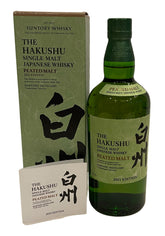Whisky vs. Whiskey: Exploring the Differences and Origins
 When it comes to whisky, a delightful spirit enjoyed by millions around the world, one of the most common points of confusion is the difference between “whisky” and “whiskey.” Is it merely a spelling variation, or does it signify something deeper? The answer, as with many things in the world of spirits, is both simple and complex.
When it comes to whisky, a delightful spirit enjoyed by millions around the world, one of the most common points of confusion is the difference between “whisky” and “whiskey.” Is it merely a spelling variation, or does it signify something deeper? The answer, as with many things in the world of spirits, is both simple and complex.
The Origins of the Words
The word “whisky” comes from the Gaelic word “uisge beatha,” which means “water of life.” This term was first used in Scotland and Ireland, where the earliest forms of whisky were distilled. Over time, “uisge” evolved into “usquebaugh,” and eventually into the more recognizable “whisky.” The spelling of the word with an “e” – “whiskey” – is thought to have been popularized in Ireland in the late 18th century, as a way to differentiate Irish products from Scottish ones.
Geography and Tradition: The Key Differences
One of the most significant factors in determining whether the word is spelled “whisky” or “whiskey” is geography. Traditionally, “whisky” refers to the spirit produced in Scotland, Canada, and Japan, while “whiskey” refers to those made in Ireland and the United States.
Scotland and Scotch Whisky
Scotland is often considered the birthplace of whisky, with a distilling history that dates back centuries. Scotch whisky, commonly known simply as Scotch, is made primarily from malted barley and aged for at least three years in oak barrels. The Scottish spelling “whisky” reflects a long-standing tradition and is protected by law under the Scotch Whisky Regulations, which dictate how Scotch must be produced, matured, and labeled.
Scotch whisky is further divided into five distinct categories: Single Malt Scotch Whisky, Single Grain Scotch Whisky, Blended Malt Scotch Whisky, Blended Grain Scotch Whisky, and Blended Scotch Whisky. The most famous and often most revered is Single Malt Scotch, made from malted barley in a single distillery. Each Scotch whisky has its own character, often influenced by the region in which it’s produced, such as Islay’s peaty and smoky expressions or Speyside’s more fruity and delicate notes.
Ireland and Irish Whiskey
Irish whiskey, on the other hand, has a slightly different history. Ireland also boasts a long tradition of whisky-making, but the use of the “e” in “whiskey” became standard in the 19th century. This was partially a marketing move to distinguish Irish whiskey from Scotch whisky, which at the time was often perceived as inferior due to the lower quality and harsher taste of some Scottish products.
Irish whiskey is typically made from a mixture of malted and unmalted barley, and it’s usually triple-distilled, which results in a smoother and lighter spirit compared to its Scottish counterpart. This smoothness, along with the subtle flavors often found in Irish whiskey, has contributed to its popularity around the world. Popular brands like Jameson and Bushmills are known for their approachable and versatile whiskeys, which can be enjoyed neat, on the rocks, or in cocktails.
American Whiskey
In the United States, the spelling “whiskey” is standard, and American whiskey has its own rich tradition. Perhaps the most famous type of American whiskey is bourbon, a spirit made primarily from corn and aged in new, charred oak barrels. Bourbon has a sweet, full-bodied flavor, often with notes of vanilla, caramel, and oak. Tennessee whiskey, another well-known American whiskey, is similar to bourbon but undergoes an additional filtration process known as the Lincoln County Process, which mellows the spirit.
Rye whiskey, another staple of American whiskey, is made primarily from rye grain and has a spicier, more robust flavor profile. It was once the most popular type of whiskey in the U.S., particularly in the northeastern states, before Prohibition caused a decline in production. Today, rye whiskey is enjoying a resurgence, thanks in part to the growing interest in classic cocktails like the Manhattan and the Old Fashioned, which traditionally use rye whiskey.
Japanese Whisky
Japanese whisky has rapidly gained global popularity over the past few decades, becoming one of the most sought-after spirits worldwide. Inspired by Scotch whisky, Japanese whisky often mirrors the Scottish tradition in terms of ingredients and production methods. However, Japanese whisky has carved out its own unique identity, characterized by meticulous craftsmanship, attention to detail, and a distinctive flavor profile that appeals to whisky enthusiasts around the globe.
The history of Japanese whisky dates back to the early 20th century, when Masataka Taketsuru, considered the father of Japanese whisky, traveled to Scotland to learn the art of distilling. Upon returning to Japan, he played a key role in establishing the country’s first whisky distilleries, including the renowned Yamazaki and Yoichi distilleries.
Japanese whisky is typically made from malted barley, with some expressions also incorporating a blend of grains such as corn or rye. What sets Japanese whisky apart is the dedication to precision in every step of the production process, from selecting the finest ingredients to aging the spirit in a variety of barrels, including American oak, sherry casks, and Japanese Mizunara oak. This last type of oak is particularly prized for imparting unique, spicy, and incense-like flavors to the whisky, adding a layer of complexity.
One of the defining characteristics of Japanese whisky is its balance and subtlety. Unlike the often bold and robust flavors of Scotch or American whiskies, Japanese whisky tends to be more delicate, with a harmonious blend of sweet, fruity, and floral notes. This makes it a versatile spirit that can be enjoyed neat, on the rocks, or as part of an elegant cocktail.
Brands like Hibiki, Hakushu, and Nikka have become iconic names in the whisky world, with some expressions winning numerous awards on the international stage. The limited production and increasing demand for Japanese whisky have also made it a collector’s item, with some bottles fetching astronomical prices at auctions.
Beyond Geography: Style and Production Differences
While geography plays a significant role in the spelling and categorization of whisky/whiskey, there are also stylistic and production differences that contribute to the diversity of this spirit. For example, the choice of grains, the number of distillations, the aging process, and even the type of barrels used can all influence the final product.
Grain Selection
The type of grain used in whisky production is a key factor in determining the flavor of the spirit. Scotch whisky, especially single malt, relies heavily on malted barley, while bourbon is defined by its use of at least 51% corn in the mash bill. Irish whiskey often combines malted and unmalted barley, which contributes to its smooth character. Rye whiskey, as the name suggests, uses rye as the primary grain, which gives it a spicy, bold flavor.
Distillation
The distillation process also varies between different types of whisky. Scotch whisky is usually distilled twice, while Irish whiskey is often triple-distilled, resulting in a lighter and smoother spirit. American bourbons and ryes are typically distilled in a column still, which allows for a continuous distillation process, leading to a different texture and flavor profile compared to pot-distilled Scotch.
Aging and Barrels
The aging process is another crucial aspect of whisky production. Scotch whisky must be aged for a minimum of three years, often in used oak barrels that previously held bourbon, sherry, or other wines. Bourbon, by contrast, is aged in new, charred oak barrels, which impart a distinctive sweet and oaky flavor to the spirit. Japanese whisky, on the other hand, may be aged in a variety of barrels, including the unique Mizunara oak, which gives it a complex and refined character. The climate in Japan, with its distinct seasons, also plays a role in the aging process, leading to a whisky that evolves uniquely with time.
Conclusion: A Matter of Preference
In the end, the difference between “whisky” and “whiskey” is more than just a matter of spelling; it reflects the rich traditions, cultures, and histories of the countries that produce these beloved spirits. Whether you prefer the smoky complexity of a Scotch whisky, the smooth elegance of an Irish whiskey, the bold sweetness of a bourbon, or the refined balance of a Japanese whisky, there is a world of flavors to explore.
As whisky and whiskey continue to grow in popularity worldwide, understanding these distinctions can enhance your appreciation of the spirit. The next time you pour a dram, take a moment to consider the journey it has taken from grain to glass, and the centuries of craftsmanship that have gone into creating the “water of life” you hold in your hand.




